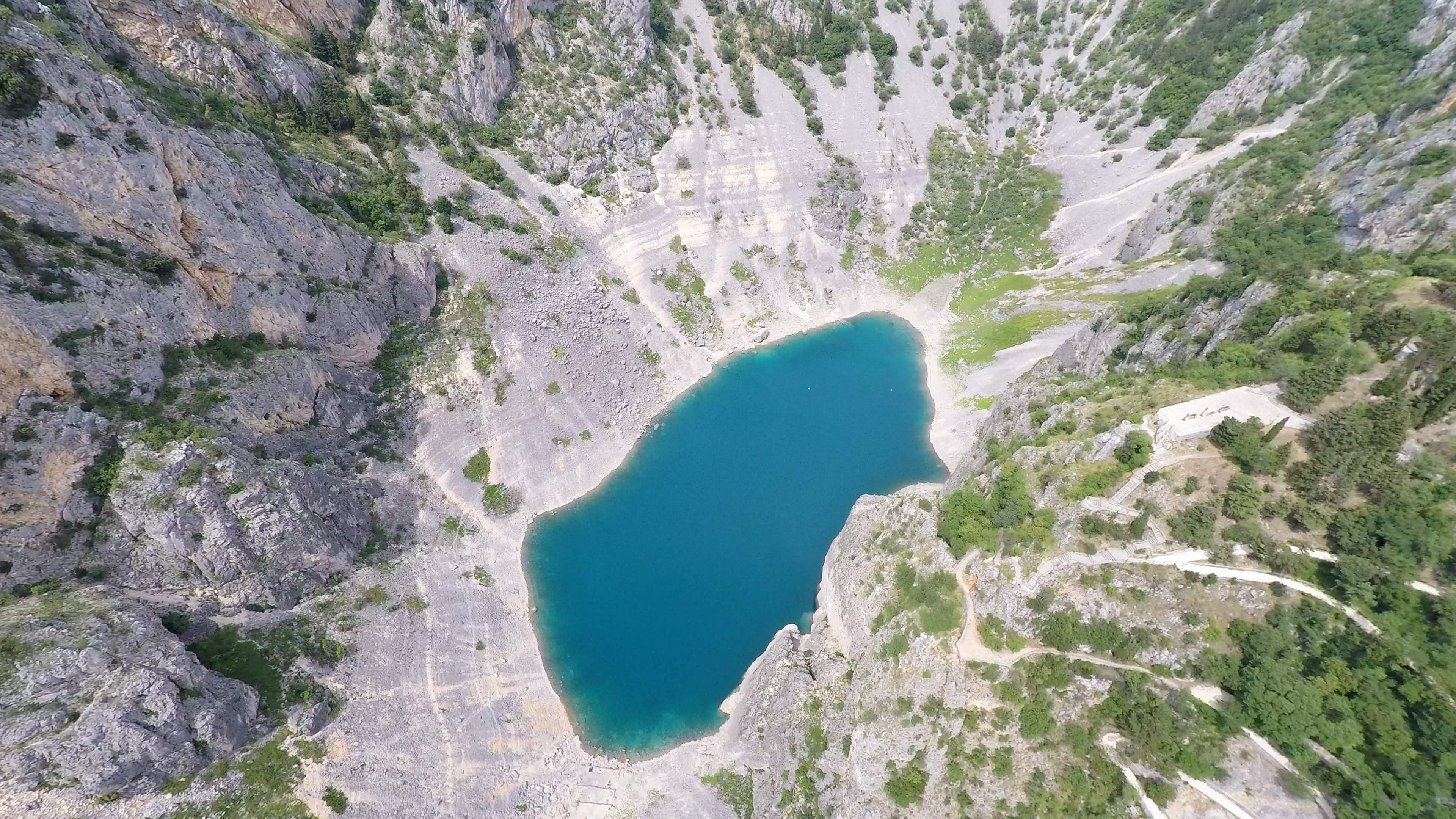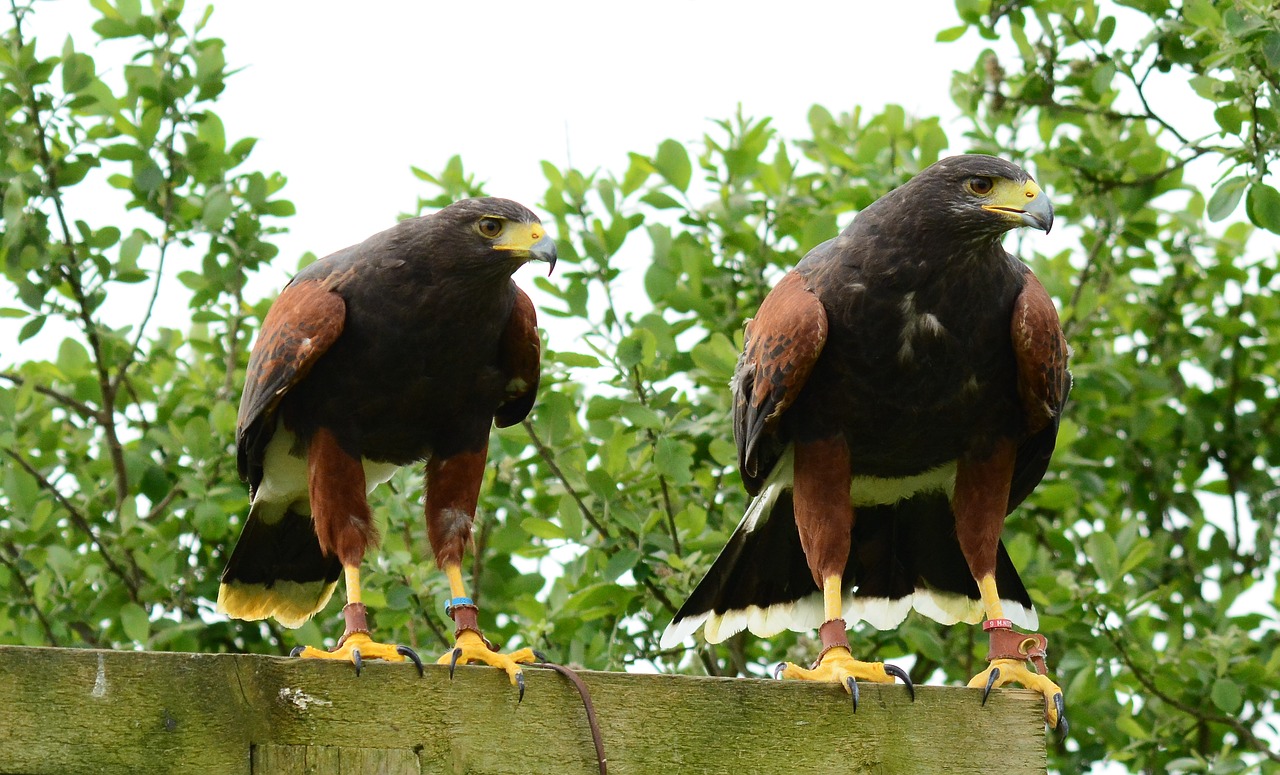No Seagulls Allowed: Two Hawks Employed to Guard Imotski Lake from Unwanted Guests
February 23rd, 2022 - Two hawks named Seka and Bea have been tasked with keeping the Blue Lake in Imotski safe from seagulls
Known to invade urban areas in search of food, seagulls are generally seen as a nuisance all over the Croatian coast. In Istria, the onslaught of gulls is being fought through measures such as nest monitoring and replacing seagull eggs with plastic fakes.
Further south, in the Dalmatian hinterland, things were taken up a notch with proper guards employed to fight the good fight against the annoying gulls.
For a while now, seagulls have been treating the stunning Blue Lake (Croatian: Modro jezero) in Imotski as their living room, and plastic eggs probably wouldn’t have been of much help here - the situation called for more extreme measures.
Enter the guards: Seka and Beatrice Bea, two female Harris’s hawks who’ve been tasked with keeping the Blue Lake safe from the gull invasion.
As reported by Slobodna Dalmacija, seagulls laid siege to the Blue Lake in Imotski about ten years ago and haven’t shown any intention to leave ever since.
Every year from the end of February to September, i.e. as long as there’s water in the lake, seagulls flock to the lake in large numbers, devastating the flora and fauna and inconveniencing the people of Imotski and their guests who often go swimming at the lake.
The gulls eradicated all the frogs, gone is the song of the blue rock thrush, and grass snakes have left the area too. Not to mention all the gull feathers and feces covering the rocks and cliffs around the lake aren’t exactly a pretty sight.
 The Blue Lake in Imotski / Image by Yacht Rent, Creative Commons
The Blue Lake in Imotski / Image by Yacht Rent, Creative Commons
There have been efforts to scare the gulls away with the sounds of cannon fire, firecrackers, scarecrows in various forms, but nothing seemed to work, and the seagulls kept flocking to the Blue Lake to rest after feasting at one of the landfills in the wider Imotski area.
And then came the hawk guards. Someone realised that the solution for the gull problem lies in nature, and soon there was talk of trained falcons and hawks, who apparently have the ability to make seagulls pretty nervous.
Falconers Emilio Međušić and Stipe Klisović of the Šibenik Falconry Center arrived in Imotski last year and brought a trained hawk along to test the hypothesis.
It only took for the hawk to spread his wings over the Blue Lake, and the flock of seagulls panicked and flew away in a frenzy. They reportedly sent a few scouts back to the lake some time later to see if the coast was clear, but as long as the hawk was seen somewhere in the area, not a single gull dared to fly down to the lake.
The Public Institution More i Krš (Sea and karst) and the City of Imotski decided to open two permanent positions for hawks to guard the lake from the pesky gulls. They acquired two hawks and ensured the birds were properly trained.
Grgo Nikolić from Imotski, a self-described bird lover and member of the hunters’ association Imotska Krajina, took over the training together with his son Slavko. They themselves trained at the Falconry Centre in Šibenik, and are now tasked with taking care of Seka and Beatrice Bea.
‘We’ve been working with Seka and Bea and we’re very pleased with what we achieved so far. We now have to get them accustomed to the environment they’ll be working in, our Blue Lake with its surroundings. We’re in the area every day, getting Seka and Bea familiar with every part of the lake, as that’s where they’ll be operating. Slavko and I both have to gain the full confidence of those birds; they’re starting to get settled in their new habitat, and are growing more accepting of us as their friends and trainers’, said Grgo.
 Harris's hawks / Pixabay
Harris's hawks / Pixabay
A few days ago, a handful of seagulls tried to scout the area and were promptly chasen away by Seka and Bea. The time of year when gulls are known to gather at the Blue Lake is fast approaching, so the two hawks will soon have a lot of work to do.
‘I’m convinced that Bea and Seka will manage to drive the gulls away, back to their main habitat on the other side of Biokovo mountain, where they could settle on the coast once and for all’, said Nikolić.
Imotski Tourist Board Director Luka Kolovrat is also pleased with Seka and Bea’s performance so far. He pointed out that the presence of two hawks might become a tourist attraction as well.
‘Last year, we saw just how much attention a single hawk from the Falconry Center drew among the tourists; they filmed the entire thing, asked about how the gulls are being chased away. Our Seka and Bea will surely make for a good addition to the tourist offer in our town’, said Kolovrat.
Don't Feed the Gulls! Istria Doubles Down on Seagull Control
February 17th, 2022 - As part of the ongoing efforts to keep the seagull population in check, several cities in Istria are appealing to the public to follow a few rules of conduct
A staple feature of the Adriatic coast, seagulls have been more of a nuisance than a pretty sight in recent times. The sleek white birds are growing more daring by the day, nesting in urban areas, rummaging through rubbish bins, and commonly seen swooping in and ripping tasty-looking snacks straight out of the hands of unsuspecting tourists.
The avian marauders are becoming more aggressive and are known to harass people outdoors. They're predominantly food-driven and will attack whenever a prospect of scoring a snack is involved.
Efforts have been made to keep the Caspian gull population in check, particularly in western Istria where a project was implemented 10 years ago with the goal of decreasing the numbers of pesky gulls in urban areas.
The project was initially launched in Poreč in 2011, and soon resulted in a 70% decrease in the population of seagulls in town. Novigrad, Rovinj and Pula have joined the initiative in the years since, with the local tourist boards appealing to the citizens to report any sightings of seagull nests on residential and commercial buildings.
Pula is now doubling down on seagull control, as reported by Morski.hr. Drones are being used to monitor the areas known as seagull habitats, and fake eggs are being planted in their nests to keep the gull population under control. The birds can't tell the difference and accept plastic eggs as if it were their own; they're known to be calmer and less aggressive during this time, and once the 'incubation' period is over, they leave the nests in search of new adventures.

The Veterinary Hospital Poreč which manages the project has published brochures containing detailed information on Caspian gulls that inhabit the Istrian coast. The birds that once only used to nest on uninhabited rocky islands have now moved to urban areas; as they prefer to nest on flat surfaces, they’ve been choosing flat roofs of hotels and family homes to build their nests.
The gulls nest from April to June, laying 3-4 eggs at a time that take about a month to hatch. They have a long lifespan and are known to live for up to 35 years! That’s a lot of time to procreate, and seeing that they have no natural predators, the gull population would likely keep increasing into oblivion if it weren’t kept in check with humane control measures.
Whether you’re only visiting Istria or staying long-term, what can you do to help? Remember to close garbage disposal bins and don’t leave any garbage on the ground around the bins, on beaches, or in any other outdoor areas. Garbage bags are not to be left outside overnight, especially in historic city centres, as the gulls are drawn to plastic bags which they got to know as their main source of food. And above all, never, ever feed the gulls!
The City of Pula has put up brochures with more information on their website - available in English, Italian and Croatian.
Think you’ve spotted a seagull nest in town? You can report the sighting by sending an email to This email address is being protected from spambots. You need JavaScript enabled to view it. or This email address is being protected from spambots. You need JavaScript enabled to view it..


